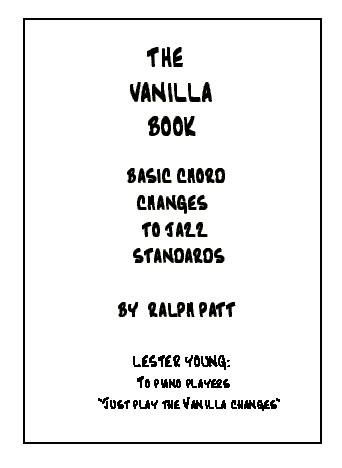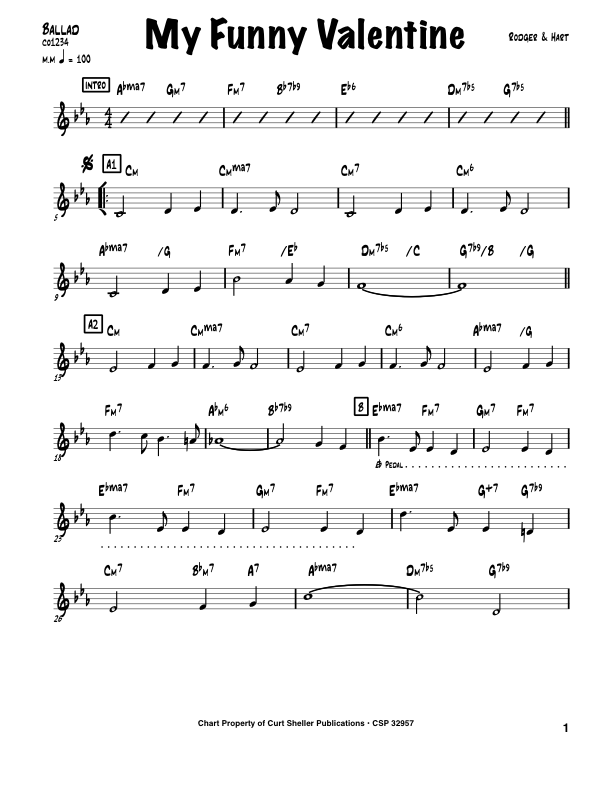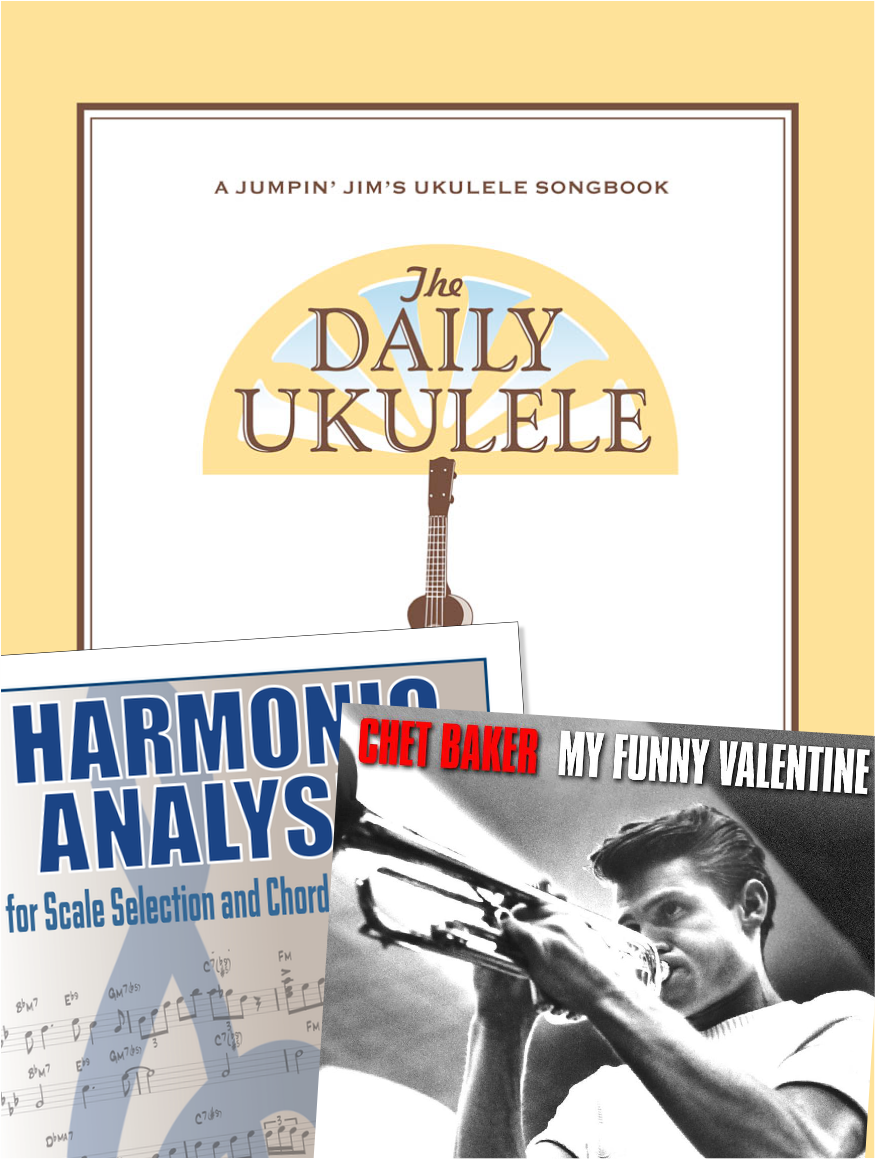Harmonic Analysis (RMA) Worksheet for the song: "My Funny Valentine".
Harmonic Analysis (RMA) Worksheet for the song: My Funny Valentine.
My Funny Valentine
My Funny Valentine is a show tune from the 1937 Richard Rodgers and Lorenz Hart coming of age musical Babes in Arms in which it was introduced by teenaged star Mitzi Green. The song became a popular jazz standard, appearing on over 1300 albums performed by over 600 artists. One of them was Chet Baker, for whom it became his signature song. In 2015, it was announced that the Gerry Mulligan quartet featuring Chet Baker's version of the song was inducted into the Library of Congress's National Recording Registry for the song's "cultural, artistic and/or historical significance to American society and the nation’s audio legacy". Mulligan also recorded the song with his Concert Jazz Band in 1960. (wikiwand);

The Daily Ukulele— 365 Songs for Better Living book.















This is the Minor Line Cliche and basically Am Am/G# Am/G, Am/F#. A descending, chromatic line A G# G F# — the Root (A), major seventh (7), minor seventh (b7), and sixth (6), but probably really double flat seventh (bb7). This is a very common mi-labeling of the chords for either marketing purposes as in the Daily Ukes books or the composer simply didn;t know the theory.
The / , slash chords, the slash note part is typically ignored for the analysis — unless it changes the harmonic function of the chord.
The C pedal for four (4) measures. On ukulele this is not really possible and still voice the chords across all four strings. So be cure to tell the bass player to pedal a C for those four measures.
III7
( V of VI)
Remember, a Harmonic Analysis/Root Movement Analysis (HA/RMA) is for scale selection and chord substitution. No need for an analysis of single beat, chromatically descending or ascending chords. Two beats chords are the shortest duration that need to be analyzed.
The above line is the same as the first four measure, the first line of the song.
III7
( V of VI)

Vanillachanges for My Funny Valentine • The Vanilla Book uncovers the basic ("Vanilla") chord changes to over 400 of the most commonly played jazz
standardsto help the jazz player learn the basic
changesand allow the player to add embellishments and substitutions on a solid framework.
Embellishments to basic chords such as added 6ths, 9ths, 13ths, flat 5ths etc. are usually determined by the melody notes and the style of music being played.

[ Cm | Cm maj7 | Cm7 | Cm6 |
| Ab6 | Ab6 | Dm7b5 | G7 |
| Cm | Cm maj7 | Cm7 | Cm6 |
| Ab6 | Ab6 | Fm7b5 | Bb7 |
|| Eb Bb7 | Eb Bb7 | Eb Bb7 | Eb Bb7 |
| Eb G7 | Cm Eb7 | Ab | Dm7b5 G7 |
| Cm | Cm maj7 | Cm7 | Cm6 |
| Ab | G7 | Cm | Bbm7 Eb7 |
| Ab | Fm7 Bb7 | Eb | Eb |
A Harmonic Analysis (RMA/HA) and its worksheet are intended to show the function of the chords, the harmonic principles used, the keys and tonalities the song explores. And, can be used for scale selections and chord and scale substitutions.
lead leadsheet.Minimal roadmap information such as repeats, fine, D.S., D.C., and codas has been used in preparing the worksheets to somewhat mirror the leadsheet in the Daily Ukulele book.
Yellow Book. You should start to recognize that 1st endings typically always return to a previous verse or an
 section. With a 2nd ending, a transition to a different part of the song, a
section. With a 2nd ending, a transition to a different part of the song, a  or chorus. Harmonic Principles are used for these repeats and transitions.
or chorus. Harmonic Principles are used for these repeats and transitions.- My Funny Valentine is in 4/4, Common Time and the Key of Am/C .
- Full Diatonic
- Partial Diatonic • Full Diatonic includes Secondary Dominant chords
- Internal Modulation

Contemporary Scales: Minor Pent: Minor Pentatonic, Pent: Major Pentatonic, Blues,
Scale/Mode Names: Ion: Ionian (Major), Dor: Dorian (Minor), Phrygian: Phrygian, Lyd: Lydian, Mix: Mixolydian (Dominant), Aeol: Aeolian (Natural Minor), Loc: Locrian


- (wikiwand) My Funny Valentine
- (wikiwand); My Funny Valentine
- My Funny Valentine • Frank Valentine
- My Funny Valentine • Miles Davis
Related Lessons, Videos, Lesson Series, Songs, Books & Reference Charts, Resources & Assets, Workshops are below.

Harmonic Analysis (HA), also known as the study of chord relationships, is the method used to identify the harmonic role of chords within a chord progression or song. A chord progression refers to a sequence of chords, with each chord having a root note and belonging to a specific chord type. The function of a chord within a particular scale's tonality is determined by its relationship to that scale.

Core Chords for Ukulele, The Big Six - From four F7 chord voicings or shapes, your can build your massive 4-part, a.k.a., “jazz” chord vocabulary. Beyond basic open position chords, basic movable form chords and a core set of 4-part chords. There are just too many chords shapes too memorize.

My Funny Valentine is a show tune from the 1937 Richard Rodgers and Lorenz Hart musical Babes in Arms in which it was introduced by former child star Mitzi Green. Recorded by Chet Baker, Frank Sinatra, Ella Fitzgerald, Andy Williams, Miles Davis, Nico and Chaka Khan. The song is a popular jazz standard, appearing on over 1300 albums performed by over 600 artists.

Harmonic Analysis is the understanding of the functional sequence of chords. It is the process used to analyze the harmonic structure of a progression, song or composition. This analysis is then used to make scale selections for improvisation and chord substitution.

Strum a different song every day with easy arrangements of 365 of your favorite songs in one big songbook! The Daily Ukulele features ukulele arrangements with melody, lyrics and uke chord grids and are in ukulele-friendly keys that are particularly suited for groups of one to one hundred to play and sing.

The Real Books are the best-selling jazz books of all time. Since the 1970s, musicians have trusted these volumes to get them through every gig, night after night. The problem is that the books were illegally produced and distributed, without any regard to copyright law, or royalties paid to the composers who created these musical masterpieces.

Finally, learn the names of the notes of the ukulele fingerboard in C tuning .

Learn the six fingering principles to navigating the ukulele fingerboard. Fingering is one of the most universal topics. Book: Six Secrets of the Ukulele Fingering

Harmonic Analysis is the understanding of the functional sequence of chords. It is the process used to analyze the harmonic structure of a progression, song or composition. Book: Harmonic Analysis for Scale Selection and Chord Substitution

Learn to read single note melodies in the first/open position is a lot easier than you might think. Book: Ukulele – Reading Music Series – Primer

An organized collection of daily practice and reference material for the contemporary ukulele player for developing the vocabulary and knowledge necessary for single note playing. Book: Daily Practice Material for the Contemporary Ukulele
Checkout the Books & Reference Charts for additional Handy, Dandy Reference Charts.

Ukulele Fingerboard Chart for C Tuning, Low or High G – G C E A

Ukulele Fingerboard Chart for G Tuning, Low or High A – D G B E

A handy reference chart of all 15 major and relative minor key signatures. US Letter 8.5 x 11 sized (ANSI-A), A4
Checkout the Books & Reference Charts for additional Handy, Dandy Reference Charts.






.jpg)